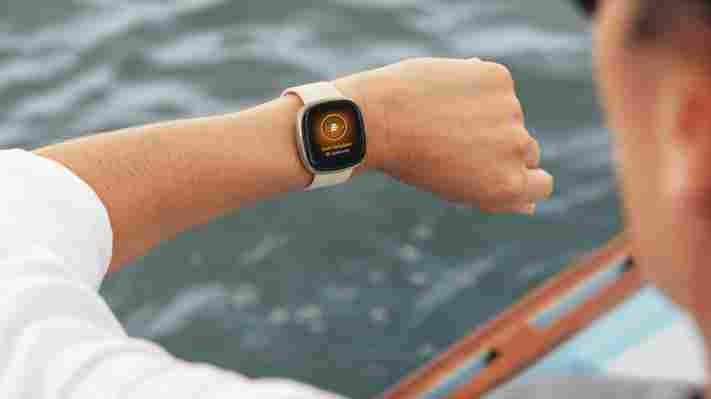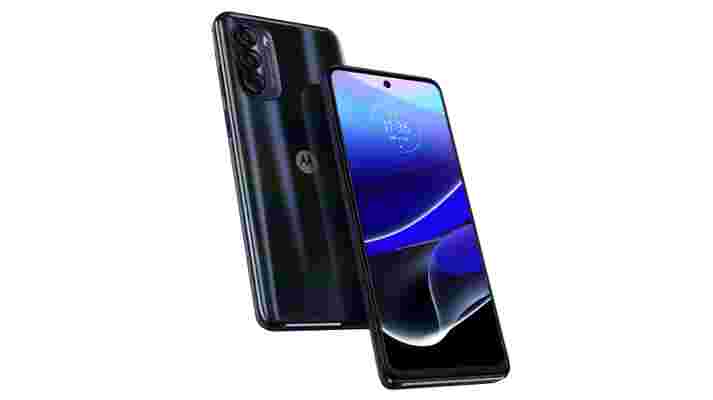The Fitbit Sense 2 may soon be landing on wrists, judging by two new device names discovered in the installation files for the Fitbit Android app. It's an exciting discovery – there's been no news from Fitbit so far this year, other than the recall of Fitbit Ionic devices earlier this month – but we can't help wondering just what a next-gen Fitbit Sense could offer to tempt us.
The Fitbit Sense was an exciting watch when it launched in September 2020, thanks to its novel stress-detecting technology. Whereas most fitness trackers, smartwatches, and running watches measure fitness by tracking heart rate variability, the Sense uses electrodermal activity (EDA), which is a measure of your skin's electrical conductivity.
Adrenal activity causes you to sweat, which makes your skin more conductive. When you enable the Fitbit Sense's EDA app and place your palm over its face, the watch sends a tiny electrical impulse through your skin, and measures changes in conductivity (EDA responses). More EDA responses over the course of a minute indicate higher levels of stress.
Although it was coincidental, mid-2020 was the perfect time for the Sense to make its debut, as the pressure of pandemic lockdown really started to bite, and many people faced particular problems with sleep as a result.

Now, however, Fitbit faces a real challenge – what can it add to make the Sense 2 as impressive as its predecessor? EDA technology alone won't cut it (Fitbit incorporated the same sensor into the smaller, more affordable Fitbit Charge 5 ) and according to the details discovered in the app's installation files, the new watch will have the same screen resolution, so it's unlikely to look radically different.
It doesn't look like this will be the long-awaited premium Fitbit smartwatch powered by Google Wear OS . The fact that its apparent codename (either 'Rhea' or 'Hera') was found in the APK for the existing Fitbit Android app suggests it'll be sticking with the same Fitbit operating system, and there was no mention of Wear OS to be found.
No sweat
So what could Fitbit do differently this time around? My prediction is continuous stress monitoring, so you don't have to access the EDA app manually and take time out of your day to perform spot checks. In fact, I'd be tempted to put money on it.
Last week, it emerged that Google (Fitbit's parent company) is seeking FDA approval for an algorithm that would allow its fitness trackers to check for irregularities in heart rate throughout the day. If its application is successful, you'd no longer need to open the ECG app on your watch to check for signs of atrial fibrillation. Instead, your watch would perform its own checks every two hours or so (depending on your activity level) and alert you if it detects an unusual heart rhythm – and it's possible that the Sense 2 could track EDA responses in exactly the same way.
With an EDA sensor built into the watch back, the Fitbit Sense 2 could measure EDA responses when it detects that you're sitting still and could even provide alerts when it notices you're starting to feel the strain, then lead you through some breathing exercises to help you get things back under control.
We're keeping our ear to the ground for any further hints about the Fitbit Sense 2 and the rumored Versa 4 , which may arrive at the same time, and we'll keep you updated as soon as we know more.
Gran Turismo 7 could be the most ambitious use of the PS5 DualSense controller to date
Gran Turismo 7 is set to use the DualSense controller and 3D audio in several interesting ways that could prove a real treat for sim-racing enthusiasts.
The upcoming track racer, which releases on March 4 on PS5 and PS4 , will help players feel closer to the action than ever before using the DualSense controller’s haptic feedback and adaptive triggers . The controller’s in-built speaker won’t be used, however.
Gran Turismo 7 will use haptic feedback to provide more information than was previously possible, like feeling subtle bumps on a road’s surface or whether your tires are slipping. You’ll also feel vibrations that mimic a car’s engine, drivetrain, and the resonance of a car’s body as you speed around the game’s many circuits.
The DualSense adaptive triggers will be able to indicate slight differences in the weight of the brake pedal between various car models, as well as mimic the experience of anti-lock brakes (ABS), which apply a pumping motion to slow a car down in heavy braking situations.
Gran Turismo 7 will also support PS5’s Tempest 3D audio tech, which we found particularly impressive in Uncharted: Legacy of Thieves Collection . Players will be able to determine where rival cars are in their vicinity, hear helicopters flying overhead, and even rain hitting the roof and windows of the vehicle. Sound will also bounce off nearby objects realistically, like fences, concrete walls, and barriers.
During a recent preview event, developer Polyphony Digital said that GT 7’s 3D audio will equate to having a 16 channel audio system on your head, and that the most effective way to experience the game’s spatial audio will be via headphones. That makes sense, considering that Sony’s 3D audio tech only works for headphones and TV speakers currently.
Analysis: PS5’s unique features remain a selling a point

The PS5 might be the most powerful console Sony’s ever made, but it also comes with some unique selling points that the competition can’t match – chiefly, that of the DualSense controller. While Dolby Atmos and DTS Headphone: X are comparable to Sony’s proprietary 3D audio, the DualSense’s haptic feedback and adaptive triggers continue to delight and have garnered impressive support from developers.
Sony’s exclusive lineup of games will certainly entice more players to the PlayStation ecosystem, but the DualSense controller really is magical enough to sway people on its own. Games like Astro’s Playroom and Ghost of Tsushima: Director’s Cut are powerful advertisements for just how immersive the controller’s clever tech can be, and with 3D audio layered on top, the two technologies make quite the compelling package for gamers.
Gran Turismo 7 is set to release on March 4 on PlayStation 4 and PlayStation 5. The next entry will feature 420 cars and an impressive 90 circuits. Players will be able to upgrade the PS4 version to PS5 for a $10 / £10 fee, too.
Motorola’s new Android phone is a cheap alternative to the Samsung Galaxy S22 Ultra
If you like the idea of having a stylus with your smartphone but don’t want to spend masses of money on a Samsung Galaxy S22 Ultra , then Motorola might have the phone for you, as the brand has just announced two new handsets, one of which comes with a stylus.
The phone in question is the Moto G Stylus 5G (2022), and it’s designed to allow you to start writing without even unlocking the phone.
This successor to the previous Moto G Stylus 5G also has a 5,000mAh battery, a 6.8-inch FHD+ screen with a 120Hz refresh rate, a mid-range Snapdragon 695 chipset, 4GB, 6GB or 8GB of RAM, and 128GB or 256GB of storage – plus a microSD card slot.
The Moto G Stylus 5G (2022) also has a triple-lens rear camera, with a 50MP main sensor, an 8MP ultrawide one and a 2MP depth sensor, while around the front there’s a 16MP camera. The phone has a 3.5mm headphone port too, and it runs Android 12 , and comes in Steel Blue and Seafoam Green shades.

The other new Motorola phone is the Moto G 5G, which is slightly less interesting but likely also cheaper. It has a 6.5-inch 720 x 1600 screen with a 90Hz refresh rate, a 5,000mAh battery with 10W charging, a MediaTek Dimensity 700 chipset, a choice of 4GB or 6GB of RAM paired with 64GB or 256GB of storage, and a microSD card slot.
The Moto G 5G additionally has a 50MP main camera, a 2MP depth sensor, a 2MP macro snapper, and a 13MP selfie camera, plus a 3.5mm headphone port and Android 12. This one just comes in Moonlight Gray. So it’s a slightly more basic phone and it doesn’t come with a stylus.
There’s no word yet on the exact release date or price, but expect to see them both soon, and likely with mid-range price tags. However, so far they’ve only been confirmed for the US, and that may not change, particularly in the case of the Moto G Stylus 5G (2022), as its predecessor was also US only.
Analysis: Old stylus vs new
You might be wondering exactly how much of an upgrade the new Moto G Stylus 5G is on the old one, and the answer is that it looks significantly better.
The old model has a smaller 6.4-inch screen with a standard 60Hz refresh rate, a much smaller 4,000mAh battery, a lesser Snapdragon 665 chipset, only 4GB of RAM, less storage at the top end, and slightly fewer megapixels on its main camera (48).
We noted in our review of that phone that both the performance and the cameras disappointed, so hopefully the upgrades here will fix that for the new model.